Interceptions win matches. They break up attacks before they develop, allow teams to regain control in dangerous areas, and launch counter-attacks. The best defenders don’t wait until the pass is made — they predict it.
This article gives you clear, practical drills to teach players how to anticipate and intercept passes using predictive movement patterns.
Drill 1: Reading the Ball Carrier
Setup:
- 3 attackers vs. 1 defender in a narrow channel, about 15x8m.
- The attackers are allowed to pass only forward or backward (no side passes).
Execution:
- The single defender positions themselves between attackers, watching the ball carrier’s hips and first touch.
- The defender must step in to intercept one of the passes.
- Once the defender wins the ball, they must dribble out of the channel.
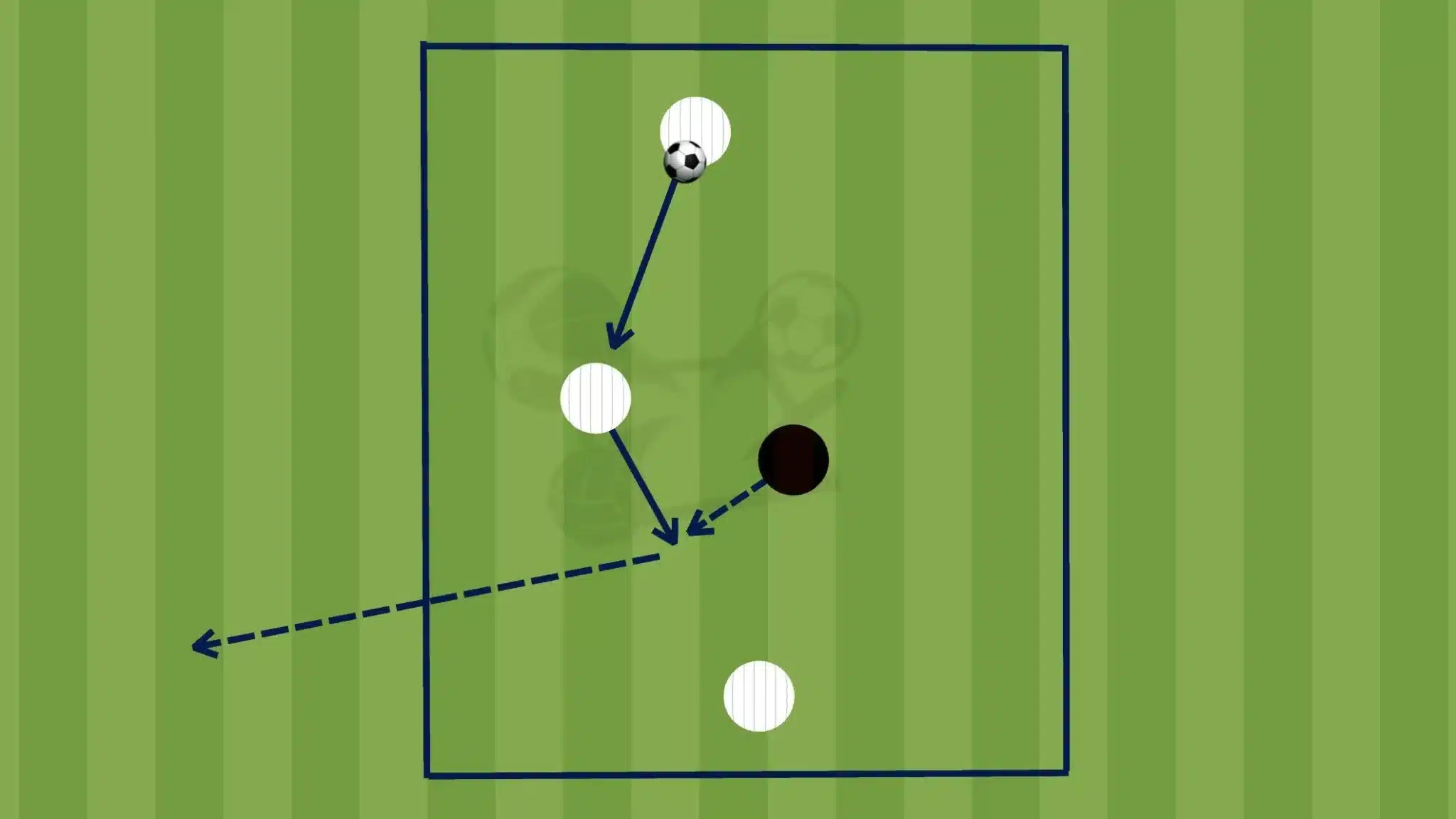
Coaching Points:
- Teach players to read body cues: hips turning toward a receiver, heavy touches, or poor body shape.
- Focus on staying balanced and ready to move in either direction.
- Reward correct timing — the defender should not simply guess.
Drill 2: Interception Races
Setup:
- Coach or server stands in the middle of a 20x15m grid with two attackers and two defenders.
- The server has multiple balls.
Execution:
- The server plays passes to attackers at different angles and speeds.
- Defenders race to cut out the pass before it reaches its target.
- If an attacker receives the ball cleanly, they must dribble to a target cone while defenders try to recover.
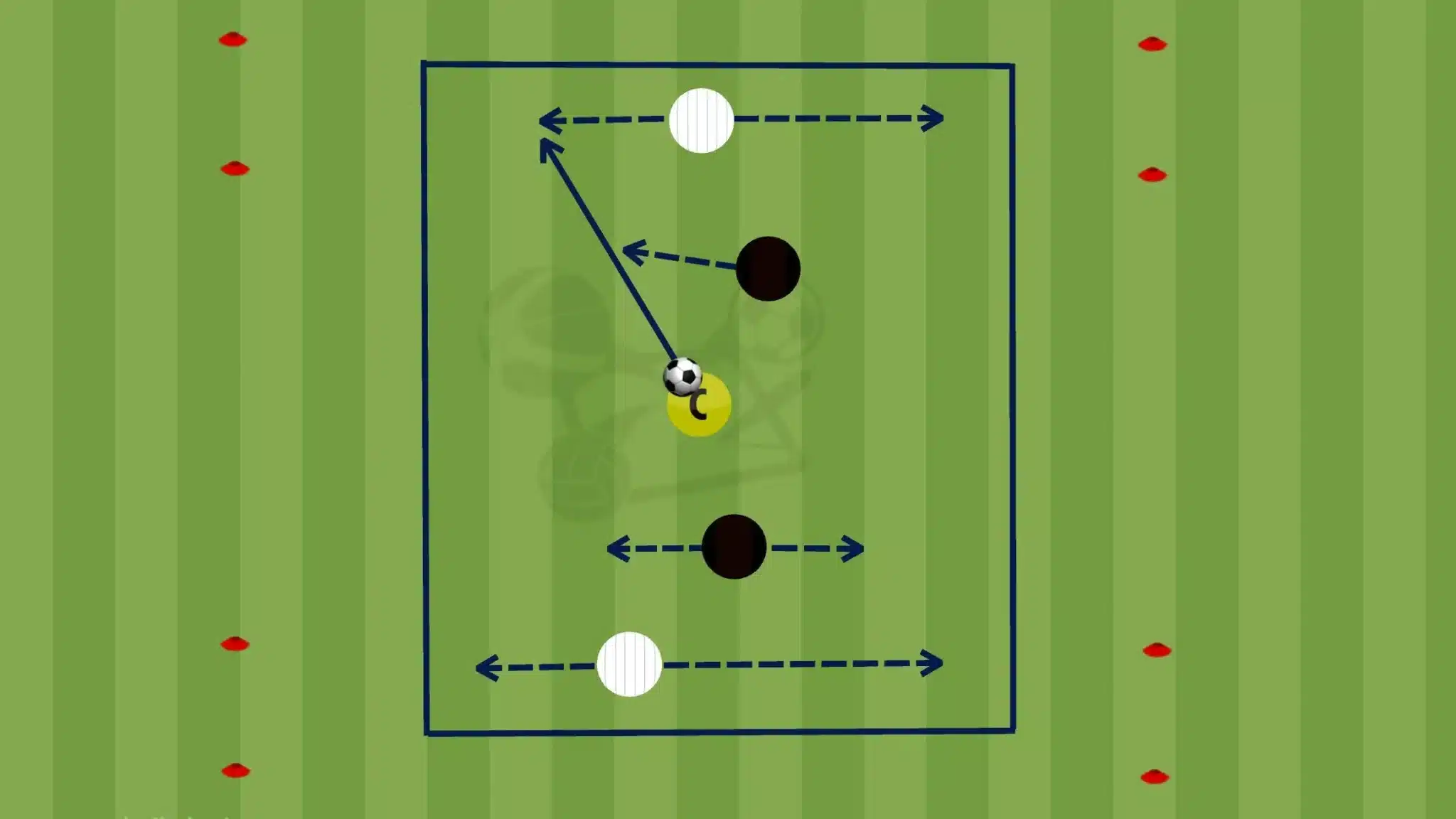
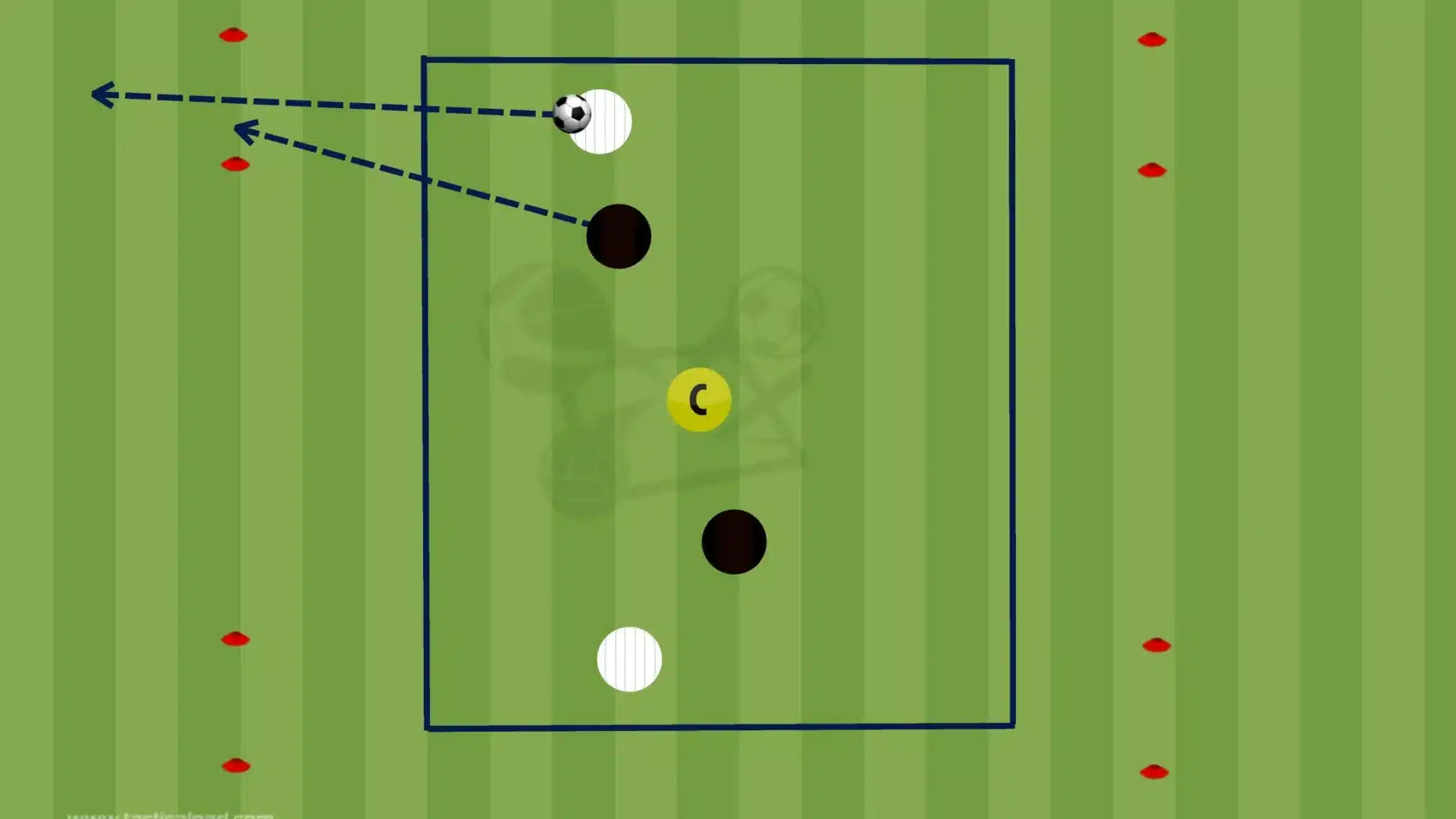
Coaching Points:
- Emphasize explosive first steps when committing to the interception.
- Teach players to angle their run so they can attack the ball’s path, not just chase the receiver.
- Focus on staying alert between passes, constantly adjusting position.
Drill 3: 3-Zone Predictive Interception
Setup:
- Divide a 30x20m area into three vertical zones.
- Place 3 attackers in one end zone, 3 defenders in the middle zone, and 3 attackers in the far zone.
Execution:
- Attackers must connect passes from one end zone to the other by playing through the middle zone.
- Defenders can only intercept — no tackling allowed.
- Once the ball is intercepted, defenders play quickly into a coach on the side to simulate transition.
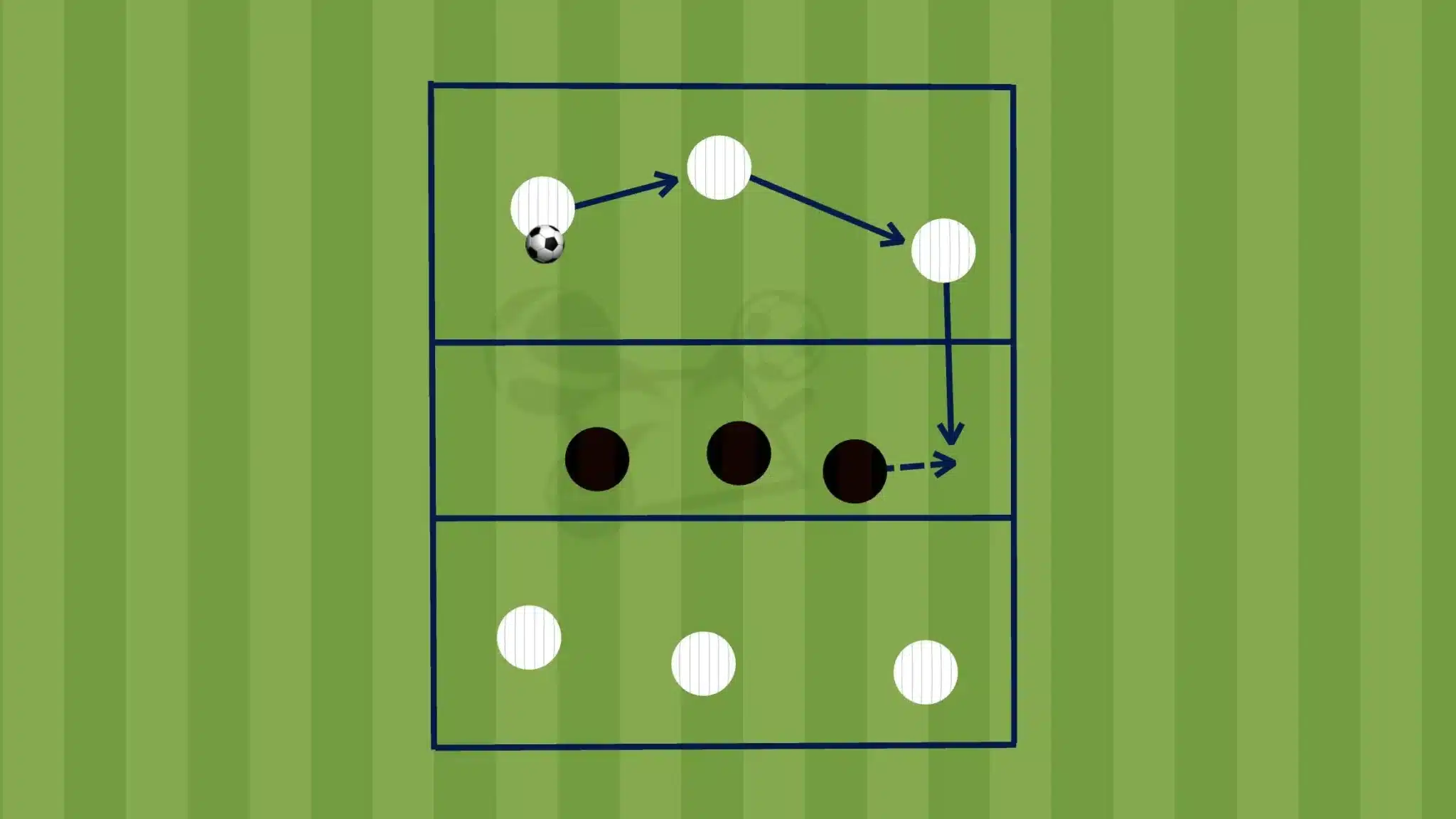
Coaching Points:
- Teach defenders to shift together as a unit, keeping passing lanes closed.
- Encourage anticipation based on ball carrier’s body shape and teammate movement.
- Emphasize communication — defenders should call out the likely passing lane.
Drill 4: Live Interception Game
Setup:
- 5v5 or 6v6 small-sided game on a 35x25m pitch.
- Normal rules, but interceptions are worth double points.
Execution:
- Game plays as usual, but defenders are incentivized to step in front of passes.
- Play 4–5 minute rounds, then rotate teams.
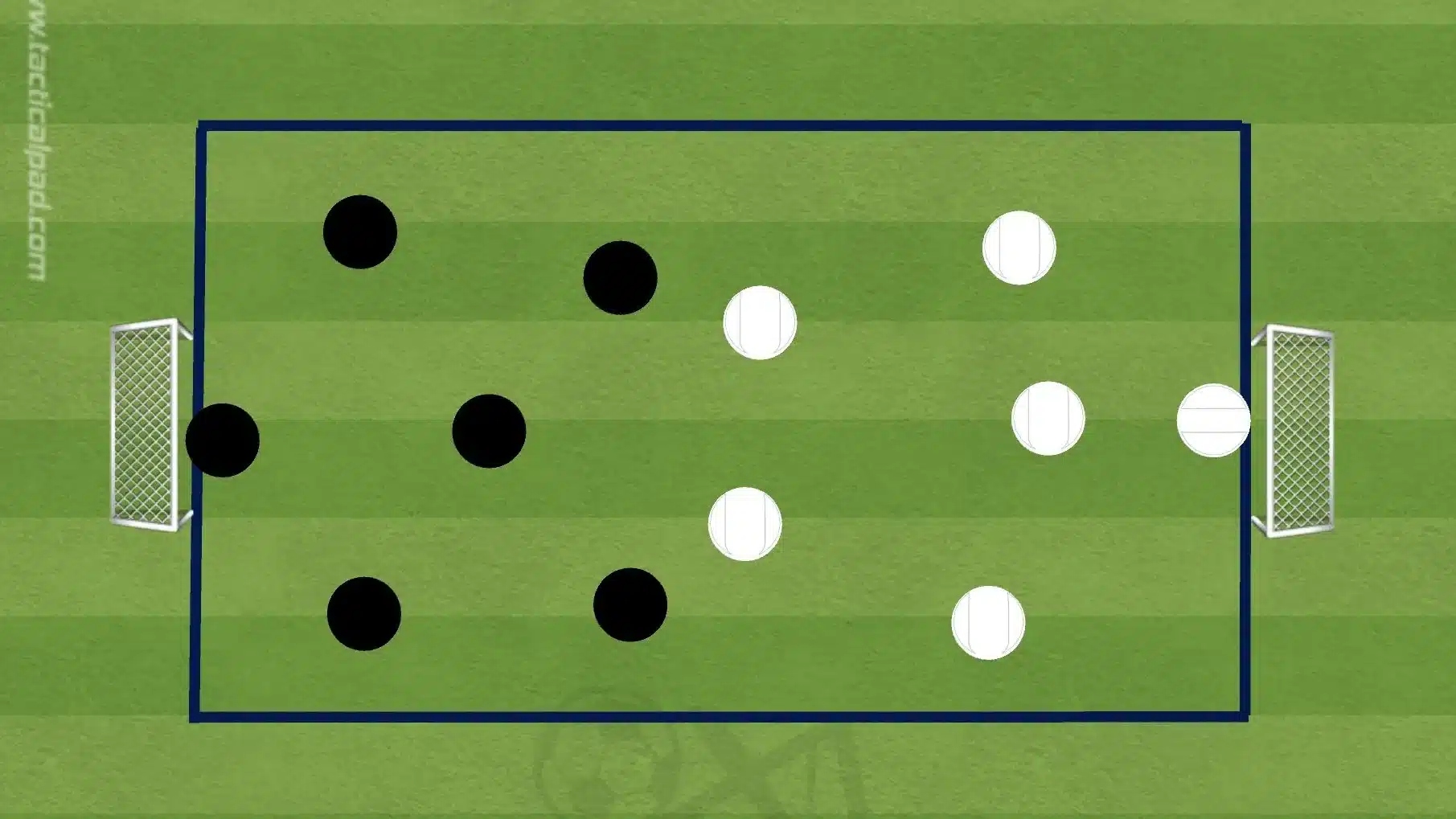
Coaching Points:
- Reward proactive defending, not just reacting after the pass is made.
- Observe player scanning habits — are they watching just the ball or reading the next option?
- Use this drill to evaluate which players naturally anticipate play well.
Conclusion
Predictive interception is a teachable skill, and the key is repetition under realistic conditions. By running drills that emphasize scanning, reading cues, and timing the movement, coaches can turn reactive defenders into proactive ball winners. These exercises build game intelligence and sharpen players’ ability to disrupt attacks before they begin — a difference-maker at every level of the game.
